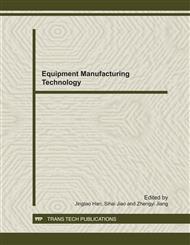p.448
p.452
p.462
p.466
p.470
p.474
p.478
p.482
p.486
The Antioxidant Resveratrol from Polygonum Cuspidatum Reverses Memory Impairment and Brain Oxidative Stress in SAMP8 Mice
Abstract:
Resveratrol (RVT) is a phytoalexin polyphenolic compound found in various plants, including grapes, berries and peanuts. Recently, studies have documented various health benefits of resveratrol including cardiovascular and cancer-chemopreventive properties. The aim of the present study was to demonstrate the effects of resveratrol on the learning and memory impairment. The senescence-accelerated mice (SAM) were introgastric gavage administrated resveratrol (25,100mg/(kg•bw)) for 60 days. The learning and memory behavior was assessed using open-field test while the parameters of oxidative stress assessed were malondialdehyde (MDA) and superoxide dismutases (SOD).The results showed that resveratrol significantly improved the learning and memory ability in open-field test. Further investigation showed that resveratrol restored SOD levels, but decreased MDA level in the mouce brain. These results indicated that the pharmacological action of RVT may offer a novel therapeutic strategy for the treatment of age-related conditions.
Info:
Periodical:
Pages:
470-473
Citation:
Online since:
December 2011
Authors:
Price:
Сopyright:
© 2012 Trans Tech Publications Ltd. All Rights Reserved
Share:
Citation:


